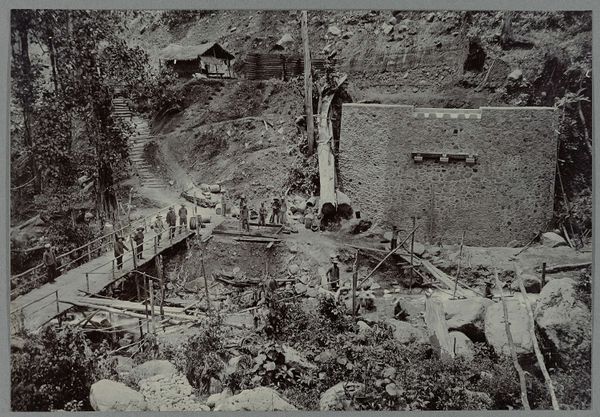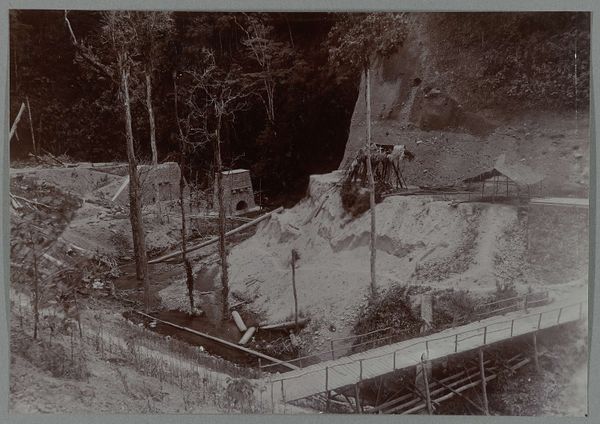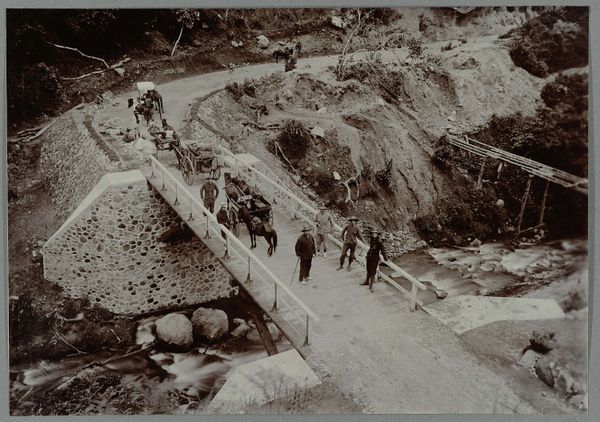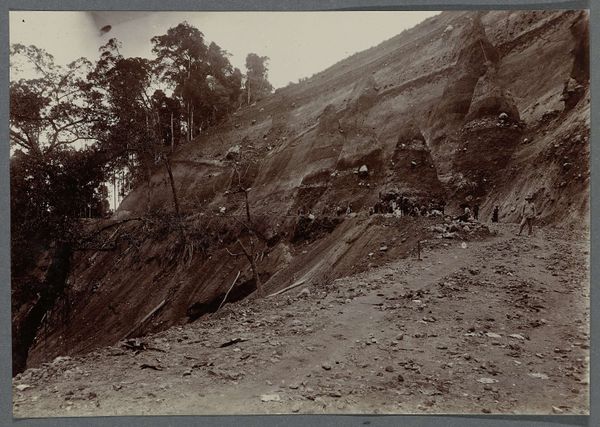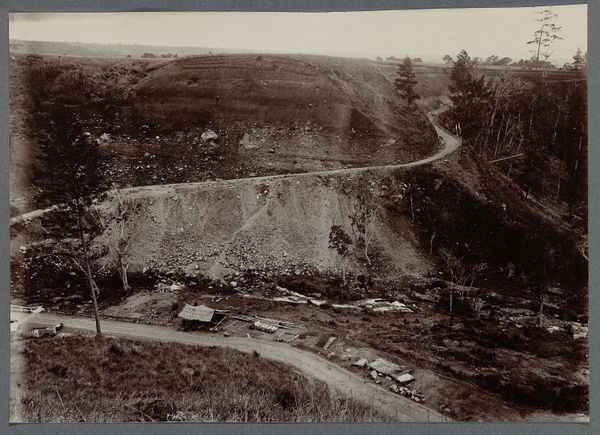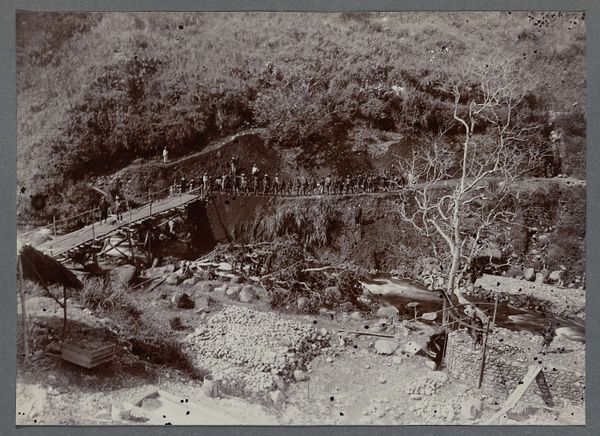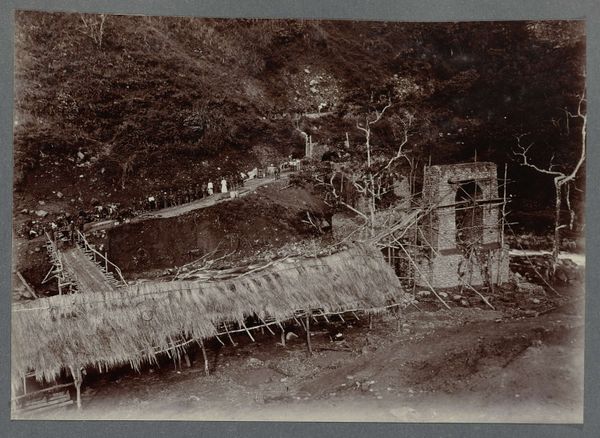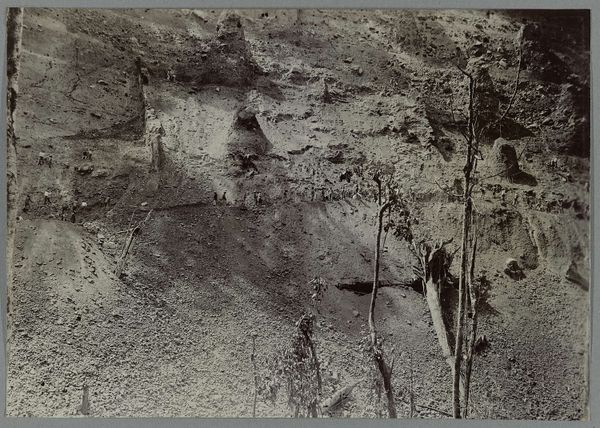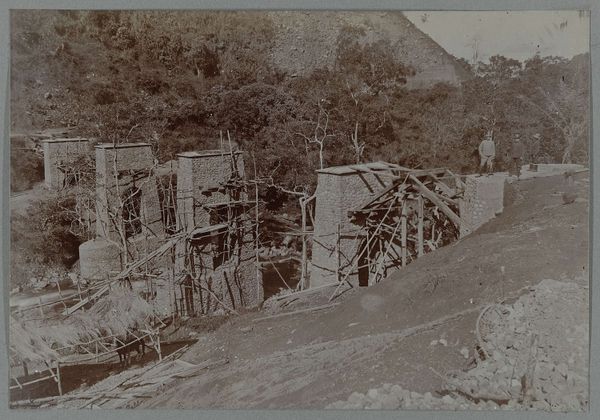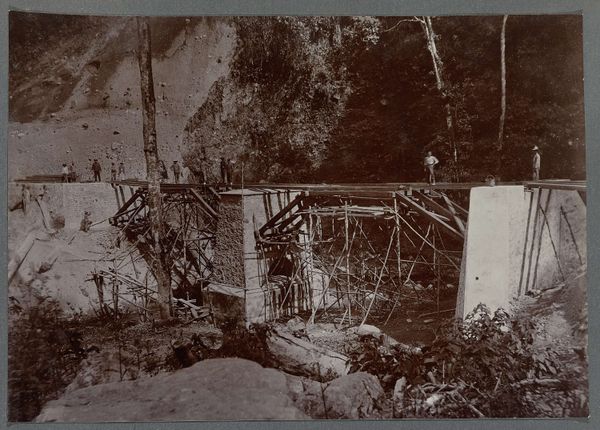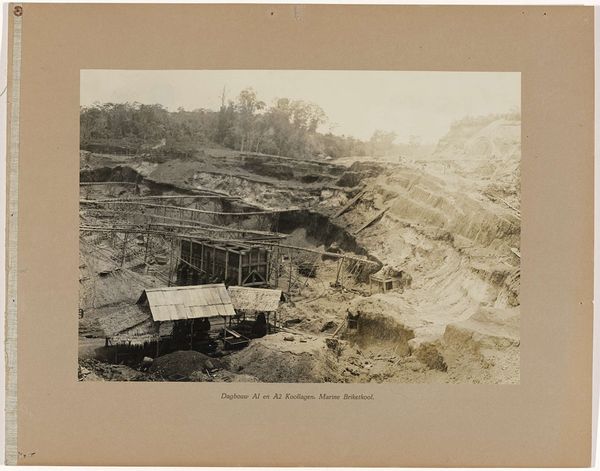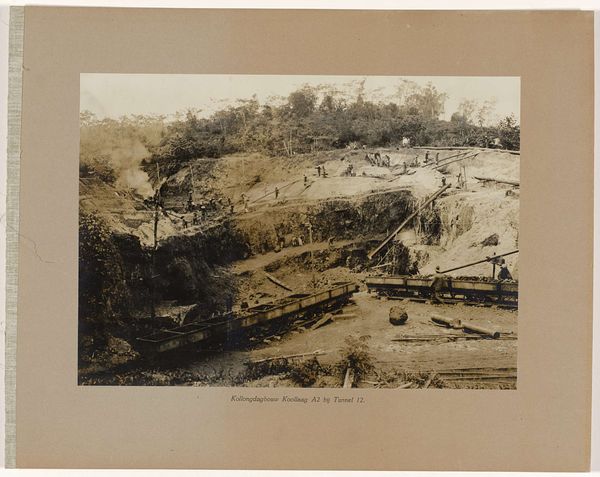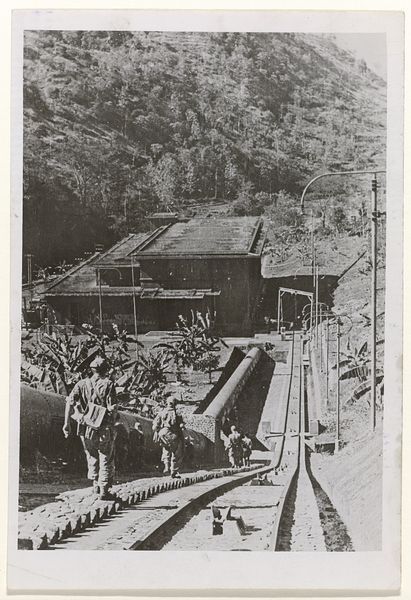
photography
#
landscape
#
photography
#
constructionism
#
early-renaissance
#
realism
Dimensions: height 138 mm, width 200 mm
Copyright: Rijks Museum: Open Domain
Curator: What strikes me immediately is the sepia tone, which casts a melancholic shadow on such a massive endeavor, creating a mood that hints at struggle and possibly even exploitation. Editor: This photograph, dating from sometime between 1903 and 1913, depicts the construction of the new bridge over the Woih ni Tanggo Besi. The anonymous artist offers us a glimpse into the material transformation of the landscape. Curator: Yes, it’s difficult to ignore the weight of progress, both literal and metaphorical. Who are these figures at the foot of the structure? Their presence gives scale to this massive, perhaps oppressive, transformation of nature. Editor: These figures are, undeniably, laborers. Look at the textures – the roughly hewn stone, the scaffolding, and the dirt, the displaced earth. These elements underscore a powerful narrative about labor, materials, and, inherently, consumption. Constructionism, while celebrated as a form of progress, is simultaneously the story of those who provide the means and of that progress's cost. Curator: It’s critical to interrogate that “progress”. Construction—often lauded—requires the displacement of both people and resources. I find myself wondering about the people indigenous to this land; what perspectives, voices, and bodies have been deliberately erased to make way for the so-called improvements shown in this image? The early Renaissance feel almost serves to give the activity the air of a colonial mission. Editor: You raise such a vital point! The act of building, seemingly neutral, carries profound implications. Examining it through the lens of materials reveals an exploitation of both earth and human. And seeing as the artwork is only black and white, a stark divide is drawn. Curator: It is this dialogue between material reality and societal consequence that makes it, although historical, forever relevant. It allows us to pose challenging questions and rethink the role that such large-scale ventures have. Editor: Absolutely. By shifting our gaze from the bridge itself to the materiality of its construction, and considering its implications, the work compels us to confront uncomfortable histories. We leave with more questions than answers, which is precisely what meaningful analysis ought to inspire.
Comments
No comments
Be the first to comment and join the conversation on the ultimate creative platform.
